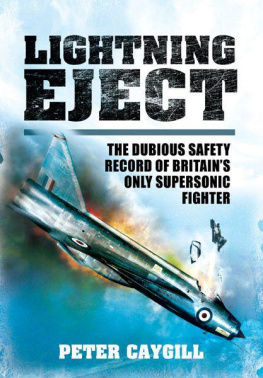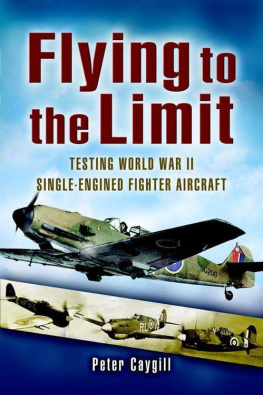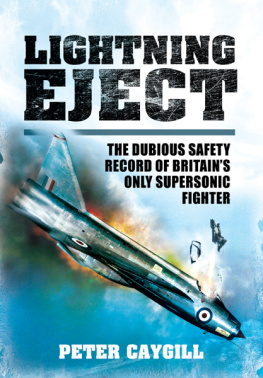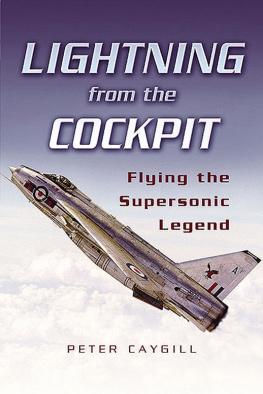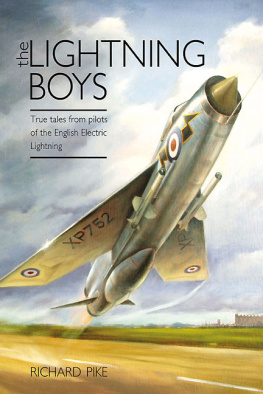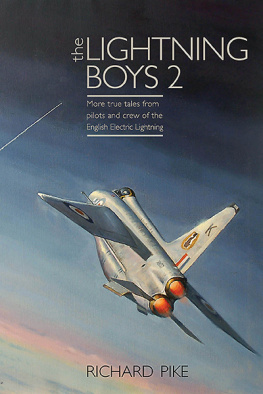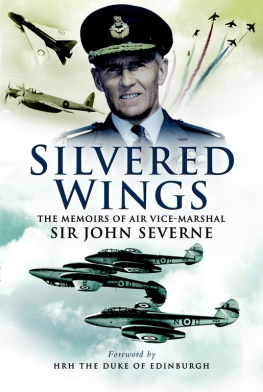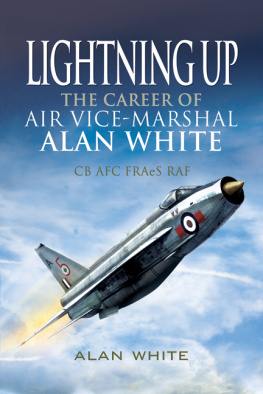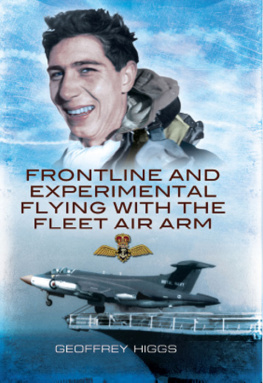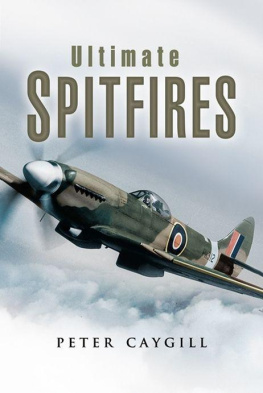
First published in Great Britain in 2012 by
Pen & Sword Aviation
An imprint of
Pen & Sword Books Ltd
47 Church Street
Barnsley
South Yorkshire
S70 2AS
Copyright Peter Caygill 2012
ISBN 978 1 84884 885 6
PDF ISBN: 9781783376261
EPUB ISBN: 9781783376285
PRC ISBN: 9781783376278
The right of Peter Caygill to be identified as author of this work
has been asserted by him in accordance with the Copyright, Designs
and Patents Act 1988.
A CIP catalogue record for this book is
available from the British Library.
All rights reserved. No part of this book may be reproduced or transmitted
in any form or by any means, electronic or mechanical including
photocopying, recording or by any information storage and retrieval
system, without permission from the Publisher in writing.
Typeset in 10pt Minion by Mac Style, Beverley, East Yorkshire
Printed and bound in the UK by CPI Group (UK) Ltd, Croydon,
CRO 4YY
Pen & Sword Books Ltd incorporates the Imprints of Pen & Sword
Aviation, Pen & Sword Family History, Pen & Sword Maritime, Pen
& Sword Military, Pen & Sword Discovery, Wharncliffe Local History,
Wharncliffe True Crime, Wharncliffe Transport, Pen & Sword Select, Pen
& Sword Military Classics, Leo Cooper, The Praetorian Press, Remember
When, Seaforth Publishing and Frontline Publishing.
For a complete list of Pen & Sword titles please contact
PEN & SWORD BOOKS LIMITED
47 Church Street, Barnsley, South Yorkshire S70 2AS, England
E-mail:
Website: www.pen-and-sword.co.uk
Contents
Introduction
T he Lightning is rightly regarded as one of the all-time classic fighter aircraft, its combination of power and fine handling qualities marking it out as a thoroughbred from the very beginning. During its service with RAF Fighter Command it was the dream of every aspiring fighter pilot to be posted to a Lightning squadron but the demands were such that only the very best were selected. Even then there were no guarantees, as a number of pilots were to be disappointed when they discovered they were not considered to be of the required standard during their final training course at 226 Operational Conversion Unit at Coltishall. Having been scrubbed, they were subsequently sent away to fly other less-demanding types of aircraft.
In addition to the skills needed to fly the aircraft and get the best out of its weapons system, pilots also had to spend many hours in the flight simulator. They often emerged as nervous wrecks after the examiner had bombarded them with a series of emergency situations of ever-increasing complication. This type of training was vital as the complexity of the Lightning meant that real emergencies in the air were many and varied and required prompt action if the aircraft was to be saved. However, there were to be many occasions when the appropriate drills as recorded in Pilots Notes were not enough and the pilot was left with no alternative but to eject. By the time that the Lightning was retired from RAF service in 1988 a total of fifty-three pilots had been forced to eject as a result of in-flight emergencies and thus owed their lives to the Martin Baker Mk 4BS ejection seat. Sadly, fourteen pilots were not so lucky and were killed during their operational tours.
This book looks at the safety record of the Lightning in RAF service and catalogues the many accidents that took place over its twenty-eight year history. It also compares the Lightning with other contemporary aircraft, including the Lockheed F-104G Starfighter, which acquired a poor reputation for safety, particularly during service with the Luftwaffe and Marineflieger, to see if claims are true that the Lightning was as bad, if not worse. Much of the information has come from official accident reports, Board of Inquiry findings and RAF flight safety reviews that are held at the National Archives at Kew, although there are some firsthand accounts by pilots who were suddenly confronted with a life-or-death situation in the air. There are also appendices that include total Lightning losses and the emergency drills that were to be carried out in the event of an engine or reheat fire and hydraulic failure, which were the principal safety issues that afflicted the Lightning during its long history.
Chapter One
The Lightning in Service
T owards the end of 1959 there was an air of anticipation within RAF Fighter Command as the English Electric Lightning interceptor was nearing the end of its test schedule and was almost ready to enter squadron service. Its introduction was sorely needed as, due to political meddling in the period immediately following the Second World War, the RAF had been forced to rely on subsonic fighter types when other air forces, notably the USAF and Soviet Air Force, were introducing supersonic interceptors. The forerunner of the Lightning, the English Electric P.1, was flown for the first time on 4 August 1954 and this had been followed by the P.1B, which looked much more like the definitive Lightning. The P.1B was first flown on 4 April 1957. To facilitate the testing of the Lightning and its associated systems, twenty development batch aircraft were produced and many of these were used for trials at the Aeroplane and Armament Experimental Establishment (A&AEE) at Boscombe Down. With the trials work progressing well it was time for the first aircraft to be delivered to the Air Fighting Development Squadron (AFDS), which was part of the Central Fighter Establishment.
In respect of the Lightning, the role of the AFDS was to provide a tactical evaluation of the aircraft and the first machine to be delivered was XG334, which was flown in to Coltishall on 23 December 1959. Less than three months later this aircraft was to become the RAFs first Lightning casualty when Squadron Leader Ron Harding was forced to eject on 5 March 1960. The problem was one that would afflict the Lightning for some time to come in that there was a malfunction in the operation of the main undercarriage. In the case of XG334 the port undercarriage leg did not extend fully and, as it would have been extremely dangerous to attempt a landing in such a condition, Squadron Leader Harding was advised to eject over the sea. A large part of the port wing was recovered and taken to the English Electric facility at Warton. After a thorough investigation it was concluded that the failure of the undercarriage to operate correctly was most likely associated with an obstruction in the hydraulic pipe to the jack, which was probably caused by a collapsed inner damper tube.
Although Ron Hardings ejection should have been straightforward, it was far from so. During a normal ejection a small drogue, parachute should have deployed to slow the seat down and stabilise it as it fell, but it appeared that this did not happen. As a result the seat, and its unfortunate occupant, tumbled through the air. To make matters worse Harding realised that some of the parachute shroud lines were wrapped around his leg and the gyrations of the seat made it difficult for him to disentangle them. Eventually he was able to remove the lines and the main parachute opened almost immediately.
A similar incident occurred on 23 November 1960 when Flight Lieutenant Peter Collins of AFDS was flying XM163. Flight Lieutenant Collins successfully carried out a night interception exercise, but when selecting undercarriage down on his return he found that only the port main leg extended (but did not lock). As his fuel state was low he flamed out No.2 engine and transferred fuel to No.1 engine before attempting several manoeuvres in the hope that the applied g would assist the extension of the undercarriage. Unfortunately this had no effect so, as fuel was by now down to 500lb, Collins climbed to 10,000 feet to eject. As he levelled off, however, the port main undercarriage finally locked in position, so he decided to return to Coltishall in the hope that the starboard leg would also come down. Whilst turning during a GCA approach the starboard leg did indeed come down and Collins made a safe landing, although it was an extremely close call as only 25lb of fuel remained when the aircraft came to a halt on the runway. The subsequent investigation revealed that a hydraulic pipe had fractured and this had affected the main and emergency undercarriage lowering systems. The loss of hydraulic pressure also meant that Collins had been forced to land without the benefit of airbrakes or flaps.
Next page
